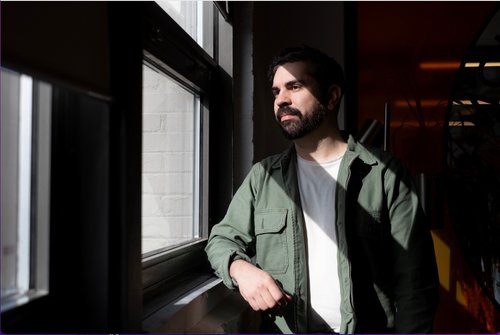Unions: to join, or not to join, that is the question
31. 1. 2022 - aktualizované 29. 8. 2022
7 min.


Periodista - Welcome to the Jungle
There’s strength in numbers – just look at any influential organization or social movement. Pulling together can be far more powerful than acting alone. It can be the key to success. This idea also applies at work, where it’s seen in the form of unions. In the US, the popularity of unions has waxed and waned, but there are some who still believe in the power of the movement to improve conditions for employees. We spoke to some of those people and their words have cast light on the motives, needs and expectations of the millions of US workers looking to labor unions for help or inspiration.
In recent months, turmoil in the US labor market has increased tensions between employers and workers, who have begun to reject the shortcomings in the labor system. Last September, in a phenomenon now being called the “Great Resignation”, about 4.4 million people quit their jobs and, for the first time since 2000, there are about 11 million vacancies across the country, according to the Bureau of Labor Statistics. At the same time, thousands of workers at major companies such as John Deere, Kellogg’s and Starbucks started to demonstrate against decades of stagnating collective bargaining agreements and poor working conditions as well as the lack of protection of their rights during the “Striketober”.
US unions have played an important part in organizing these protests and, although just 10.8% of workers were represented by a union in 2020, 68% of US citizens look on them favorably, according to a survey by Gallup. R Davis (22), who is based in Washington DC, is a student and former worker at an on-campus, inter-organizational union at the University of California San Diego. Davis says many people aren’t necessarily opposed to unions as entities, but adds that “they have no understanding of why they need them.”
For Barbara Taylor (25), a unionized worker at the American University, Washington DC, the lack of legal support to form unions or information regarding union representation in the workplace are key factors in why there are so few unionized workers.
Taylor also highlights the strong anti-union movement, which for decades reinforced an image of unions as “organizations that are there to take your money, to make it harder for you to get a job [and] to make it harder for you to move up.” This is a view shared by B Arneson (32), who lives in Duncan, South Carolina. She is a researcher for Corruption Tracker and has worked with popular “resistance” groups at some of her former jobs. She says that sometimes the reluctance to join a union is not down to a lack of willpower but that many people are “afraid of being threatened, intimidated, or harassed by employers.”
Why join a union? The inside story
Both Davis and Taylor say that having union representation is an opportunity to protect your quality of life and your job. For Davis, unionizing represents an opportunity to protect your freedom of speech and not live in fear that you’ll be fired for speaking up. Union representation “guarantees you can have a basic level of comfort and leave [aside] a whole lot of other stresses in your life,” says Taylor. For her, union membership is “a crucial thing for most workers to have in the US – and a social community around that calls for communal values, [and putting the] community over the individual.”
Taylor became involved in defending workers’ rights following a conversation with a member of the union at the faculty where she works. The need to improve her conditions and those of her colleagues convinced her to join the union and take part in protests to put pressure on the university administration. “Through learning all its history, I went to a union myself,” she explains. “I never really heard anything from either of my parents about it. But I’m from Chicago and the public school system is notorious for not meeting the conditions of teachers. They would all strike . . . and students had to stay home. And so I kind of had a glimpse of it through there.”
Arneson’s experience is different. She isn’t a member of a union, but she has had to deal with “plenty of experiences with poor working conditions, no healthcare, and no paid sick time.” That is why she supports the idea of unions. For her, being part of a union would give her a sense of relief. “The collective power a union provides guarantees a more secure and safe experience for workers than a non-unionized position does,” she adds. According to a study by the Economic Policy Institute in 2020, 94% of workers covered by a union contract have access to health insurance provided by the employer and 91% can also access paid sick leave. This is in comparison to 68% and 73% for non-unionized workers respectively.
Convincing others
‘I’m not saying that entry-level workers should make as much as a person running the show, but a CEO making 400 times more, I think that is unreasonable. I don’t think one human is working 400 times harder than someone on the entry level.’
Conveying all these ideas to others isn’t always easy because many workers can’t see the big picture when it comes to unions, saying they don’t want to have to pay another bill when they could just follow the rules, work hard, potentially get promoted and earn more money, Taylor says. According to the unionist, no amount of hard work can explain the pay gap that exists between a chief executive and their workers: “I’m not saying that entry-level workers should make as much as a person running the show, but a CEO making 400 times more, I think that is unreasonable. I don’t think one human is working 400 times harder than someone on the entry level.”
The arguments and perspectives change when it comes to young workers. In Taylor’s experience, many show an interest in learning how unions work. She says she managed to win over one of her friends by “being honest about our salaries and our hourly wages, and letting him know what’s going on around unions, and the differences between union workers and non-union workers.” In this regard, the study by the Economic Policy Institute claims that union workers earn on average 11.2% more than non-unionized workers.
In her view, one of the factors that explains young people’s growing interest is that they are willing to take part in social movements against inequality. However, unionizing isn’t always easy. For Taylor, the greatest difficulty is the silence surrounding unions and the lack of awareness about them: “I didn’t even know I had union representation until I reached out and I didn’t know what my rights were. I received a lot more information only after signing up.” She believes that this lack of information could be improved and would be solved with a report providing the details of necessary contacts, instructions about how to sign up, what the money you pay goes towards, etc.
Are unions still relevant today?
‘I think we’re worried about mounting levels of stress that are bad for our minds and our bodies coming from being overworked.’
Each generation sees life differently and faces different challenges – including at work. These days unions are no longer worried about people falling off skyscrapers at construction sites or factory accidents. “I think we’re worried about mounting levels of stress . . . from being overworked,” she says. “Unions are needed just as much for similar reasons. People are working all hours and they are not making enough.”
In Arnenson’s view, the poor labor conditions seen at the height of the Covid-19 pandemic have reinvigorated unions. The researcher believes these institutions have started to be seen as agents that can “raise wages, grant better benefits for workers and their families, increase employer contributions towards pension plans, and boost vacation time and total paid leave.” As Davis says, workers should be able to expect their unions to provide “professional and legal answers according to their needs” and that they should do so “through experience.”
What next?
‘It’s a labor crisis here in the US. Most of the wages that people receive here do not provide (what they need) to live and the Great Recession made people realize the way that employers can just change the game (in a way) that substantially affects the economic viability of workers’
The protests seen across the country since August 2021 are the result of workers being asked to work long hours, while not having any job security or labor rights. They are, however, in Taylor’s view, “very promising.” She says: “It’s a labor crisis here in the US. Most of the wages that people receive here do not provide (what they need) to live and the Great Recession made people realize the way that employers can just change the game (in a way) that substantially affects the economic viability of workers.” This explains why unions are growing in popularity, she says.
A good example of this is the case of the Starbucks workers in Buffalo who, for the first time in the company’s history, have managed to unionize and have now inspired their colleagues in Boston, who are looking to do the same. Davis also alludes to the media coverage and the social impact of these recent mobilization efforts, believing that they haven’t just exposed corporate attempts to “harm unionization”, but that they’ve also helped promote transparency surrounding the work of unions.
Arnenson hails this victory and claims that, in a world in which “people can barely afford to put food on the table” and in which “corporations continue to harm us in the most insidious ways”, the pandemic and the US labor shortage have revealed the power that workers have.
“With the great resignation and Striketober we are seeing this is actually very unacceptable: to work 80 hours a week and still not be able to afford groceries. Those are very unacceptable conditions to live in, especially in a country that is incredibly wealthy and powerful,” Taylor says. She believes we are witnessing the perfect conditions for workers to decide to join a union – and for unions to seize the moment, rally together and mobilize people and organizations.
Ultimately only time and events will determine what is to become of the US labor union movement. However, for the first time in decades, workers are being listened to by their employers: the cases of John Deere and Starbucks serve as evidence of how workers have faith in this movement.
*Name changed at the request of the interviewee in order to preserve anonymity.
Photo: Welcome to the Jungle
Follow Welcome to the Jungle on Facebook on LinkedIn and on Instagram and subscribe to our newsletter to get our latest articles every day!

Viac inšpirácie: Pracovné dokumenty

What to know before starting a side hustle
Nearly half of Americans have a side hustle, but what are the risks?
23. 5. 2024

How do promotions actually work?
“Being great at your job might not get you promoted, in fact, it might be what gets you stuck...”
23. 3. 2023

Meet the New Yorker pushing for a better deal for freelancers
"Freelancers face unique challenges you don’t see in any other labor force," says Raphael Espinal, director of the Freelancers Union in NYC
02. 2. 2023

The perfect heist: Is your boss stealing your salary?
In Los Angeles, New York City and Chicago alone, more than $3 billion in wages are stolen from workers each year
22. 11. 2022

Free speech at work? Usually not, but here are 7 exceptions
Free speech is the most fundamental protection guaranteed under the Bill of Rights. But in the workplace it remains largely misunderstood
03. 10. 2022
Novinky, ktoré to vyriešia
Chcete držať krok s najnovšími článkami? Dvakrát týždenne môžete do svojej poštovej schránky dostávať zaujímavé príbehy, ponuky na práce a ďalšie tipy.

Hľadáte svoju ďalšiu pracovnú príležitosť?
Viac ako 200 000 kandidátov našlo prácu s Welcome to the Jungle
Preskúmať pracovné miesta